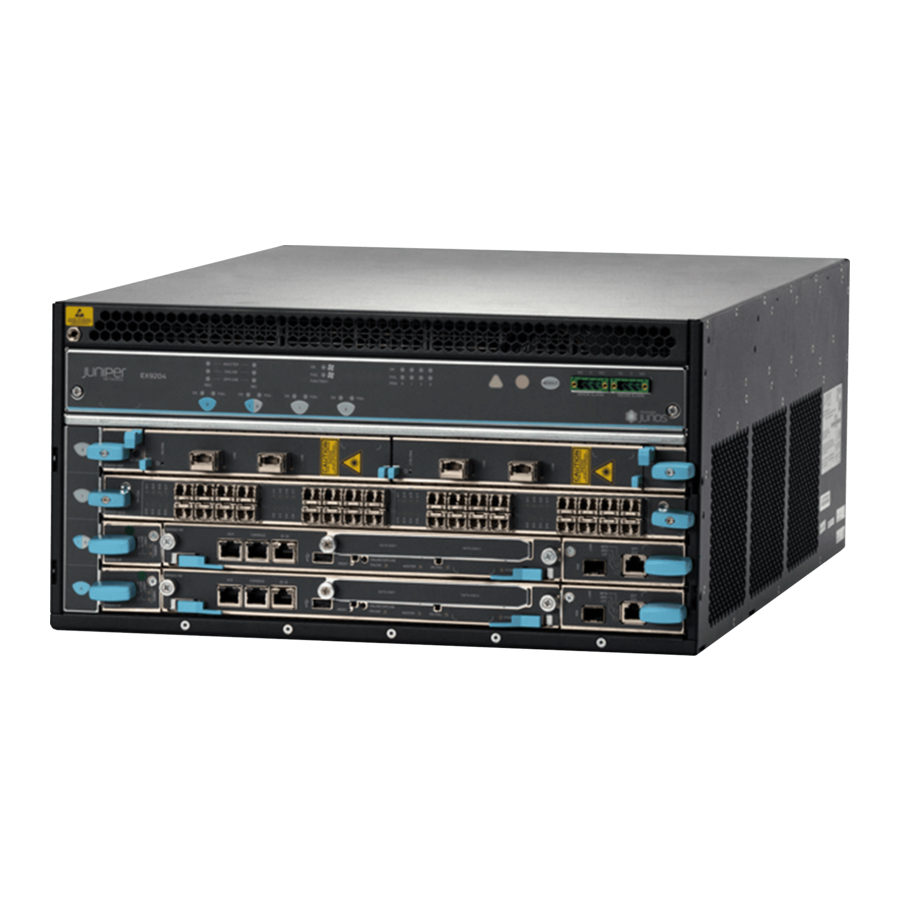
Juniper EX9200 Series Manuals
Manuals and User Guides for Juniper EX9200 Series. We have 11 Juniper EX9200 Series manuals available for free PDF download: Features Manual, Manual, Overview Manual
Juniper EX9200 Series Features Manual (342 pages)
High Availability Feature Guide EX series
Brand: Juniper
|
Category: Network Router
|
Size: 3 MB
Table of Contents
Advertisement
Juniper EX9200 Series Features Manual (448 pages)
Port Mirroring Feature Guide EX series
Brand: Juniper
|
Category: Network Router
|
Size: 2 MB
Table of Contents
Juniper EX9200 Series Features Manual (278 pages)
Traffic Policers Feature Guide EX series
Brand: Juniper
|
Category: Network Router
|
Size: 2 MB
Table of Contents
Advertisement
Juniper EX9200 Series Features Manual (266 pages)
Spanning-Tree Protocols Feature Guide EX series
Brand: Juniper
|
Category: Network Router
|
Size: 2 MB
Table of Contents
Juniper EX9200 Series Features Manual (198 pages)
VPLS Feature Guide
EX series
Brand: Juniper
|
Category: Network Router
|
Size: 2 MB
Table of Contents
Juniper EX9200 Series Features Manual (176 pages)
Network Management and Monitoring Feature Guide
Brand: Juniper
|
Category: Network Router
|
Size: 1 MB
Table of Contents
Juniper EX9200 Series Manual (118 pages)
Hardware Topics for Aloha Line Card
Brand: Juniper
|
Category: Network Hardware
|
Size: 3 MB
Table of Contents
Juniper EX9200 Series Features Manual (152 pages)
Virtual Chassis Feature Guide EX Series
Brand: Juniper
|
Category: Network Router
|
Size: 1 MB
Table of Contents
Juniper EX9200 Series Features Manual (90 pages)
Flow Monitoring Feature Guide EX series
Brand: Juniper
|
Category: Network Router
|
Size: 1 MB
Table of Contents
Juniper EX9200 Series Features Manual (84 pages)
Port Mirroring Analyzers Feature Guide EX series
Brand: Juniper
|
Category: Network Router
|
Size: 1 MB
Table of Contents
Juniper EX9200 Series Overview Manual (72 pages)
Class of Service Overview and Examples
Table of Contents
Advertisement










